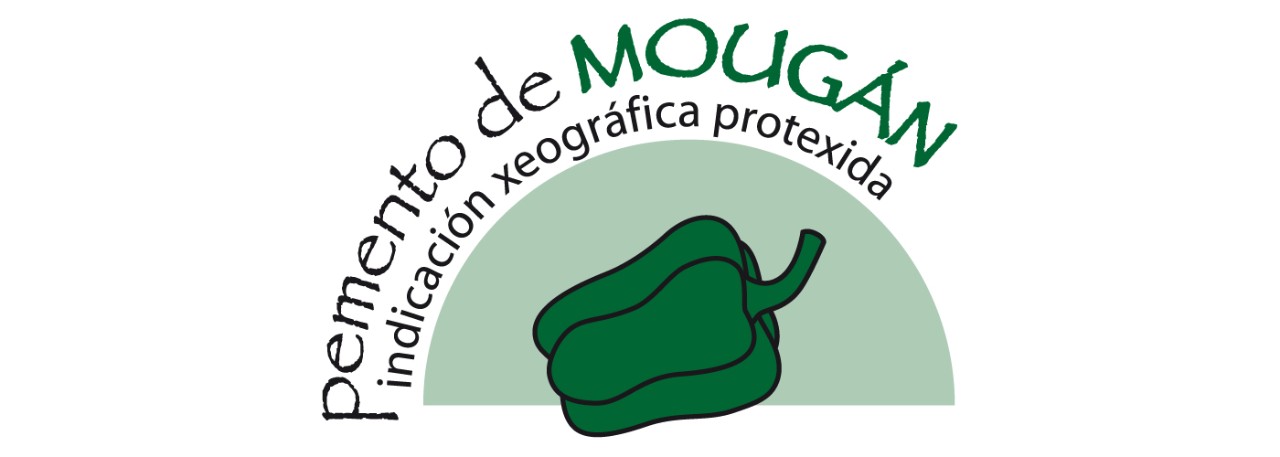.png.transform/rendition-xs/image_image%20(1).png)
Pemento de Mougán PGI
Fruit of the Capsicum annuun L species, from the local ecotype known by the same name. It a semi-cartilaginous fruit that is green colored in its unripe state and red when ripened. The fruit is square (A4 according to Pochard, 1966) and is classified according to its shape as CMV3L (square three-lobuled "morro de vaca"); it is picked when green (early unripened state) and sold as fresh produce.
Tasting notes
"Pemento verde de Mougán" has smooth, juicy flesh, with a sweet, slightly herby and sometimes hot flavor, and a moderately intense aroma. It is popular for its morphology, being a small pepper eaten when green, and the thinness of its inner walls.
Other notes
The peppers are of a regular, elongated shape, with 1 segment and 3 or 4 membranes, with no major ridges. They weigh between 100 and 200 g / 3.5 and 7 oz each, their length varies from 10 to 20 cm / 3.9 to 7.8 in and at the base they are between 6 and 8 cm / 2.3 and 3.1 in wide. In cross section, they have 3 or 4 lobes and the tip can be pointed or rounded.
Production / Processing method
Seed bed preparation and sowing are done between December and January. After germination, and once the plants are about 5 cm high, they are thinned out and transplanted to trays with individual cavities. The traditional method of sowing onto the land followed by transplanting is also acceptable.
The crop can be grown in the open air or under cover. In the former case, planting is done between April and June, with a density o f 3 to 6 plants per m2. In the latter case, planting is done in March or April, with a density of 2 to 4 plants per m2.
Picking is done by hand, in as many waves as may be required to obtain quality fruit. As many materials (tools, boxes, containers, etc.) and human means required are used to prevent the product from deteriorating. The fruit must be taken to the handling warehouse as quickly as possible, in boxes or some other kind of rigid container to prevent them from being crushed. Unloading is done in such a way that any damage from the fruit falling is kept to a minimum.
Normally, the picking and sale season starts on 1 June and ends on 15 November, and the maximum production allowed in 6 kg per m2 in the open air and 8 kg per m2 under cover, although these parameters may be changed depending on weather conditions during a particular season.
Peppers from the "Pemento de Mougán" PGI are sold in transparent polythene bags holding from 200 and 400 g of product. Other sizes and packaging materials may be authorized, provided they are permitted by food legislation.
Geography / Relief and climate
The defined area forms a homogenous territory from the point of view of climate and soil type. The area is protected by mountain ranges surrounding the production valleys, resulting in a distinctive micro-climate combined with the ideal soil type for this type of crop. The most common rock formations are igneous (granite) and metamorphic (slate, schist and occasional sections of quartzite). The land texture is characterized by a high sand content with a predominance of sandy-lime soils with a high content of organic matter and a low pH.
The area has low rainfall, around 1,000 mm, compared to the average for Galicia, as it is protected from westerly winds. Temperatures are usually mild, with an average in summer of 17.2 °C, in autumn of 12.5 °C, in winter of 6.7 °C and in spring of 10.5 °C.
Regulatory Council
Instituto Galego da Calidade Alimentaria (INGACAL)
Pazo de Quián - Sergude
15881 Boqueixon (A Coruña)
Galicia
Tel: (+34) 881 997 276
ingacal@xunta.es
www.medioruralemar.xunta.es/
Sources:
- Spanish Ministry of Agriculture
It is popular for its morphology, being a small pepper eaten when green, and the thinness of its inner walls.


- /content/dam/en/icex-foodswines/images/products/fruits---vegetables/pemento-de-mougán-pgi/Pemento%20de%20Mougán%20PGI%20carr1.jpg
- /content/dam/en/icex-foodswines/images/products/fruits---vegetables/pemento-de-mougán-pgi/Pemento%20de%20Mougán%20PGI%20carr2.jpg

Boqueixón (Galicia)
